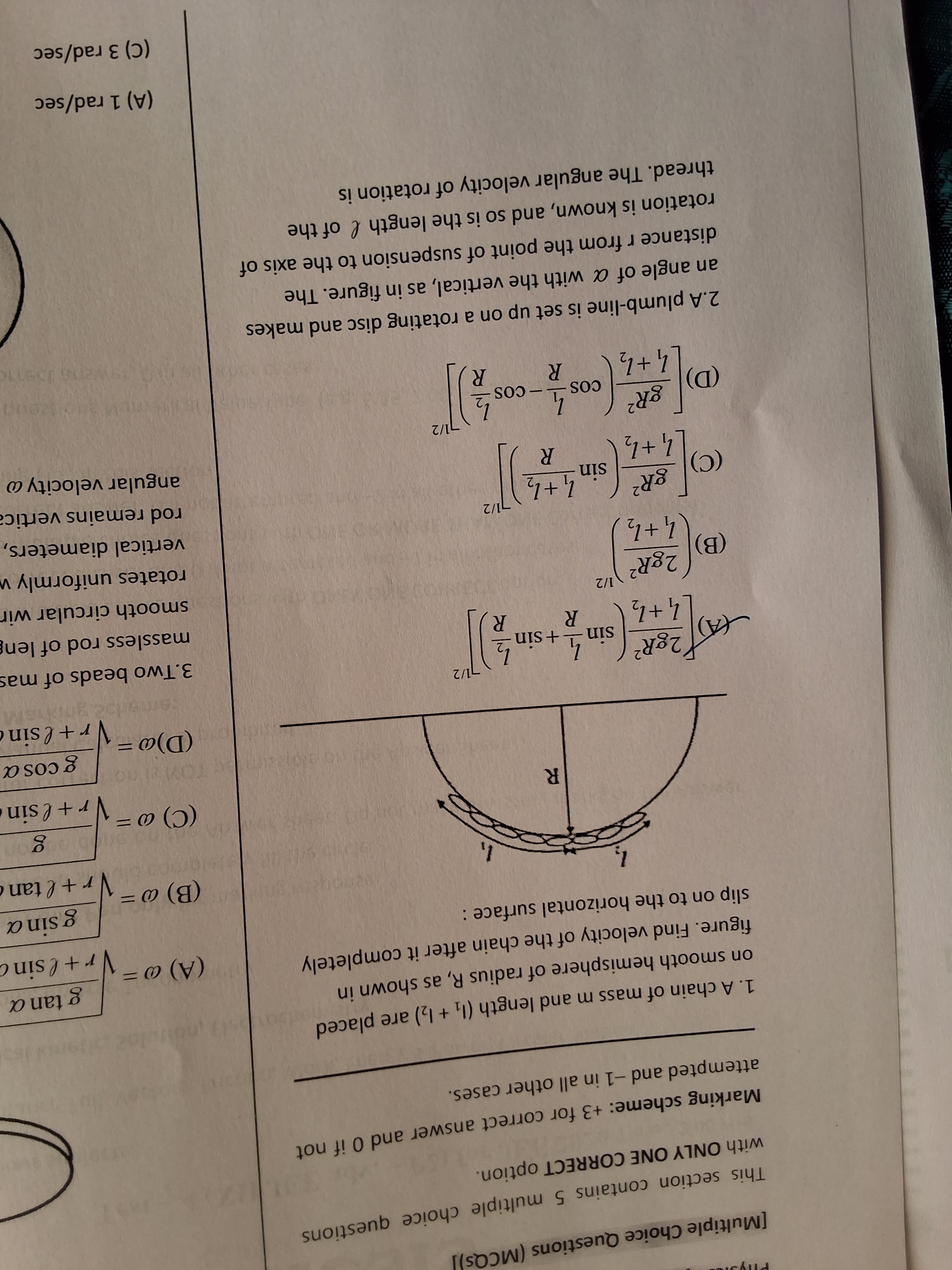Question
Question: A chain of mass m and length ($l_1 + l_2$) are placed on smooth hemisphere of radius R, as shown in ...
A chain of mass m and length (l1+l2) are placed on smooth hemisphere of radius R, as shown in figure. Find velocity of the chain after it completely slip on to the horizontal surface :

l1+l22gR2[sinRl1+sinRl2]1/2
l1+l22gR2
l1+l2gR2sinRl1+l2]1/2
l1+l2gR2[cosRl1−cosRl1+l2]1/2
l1+l22gR2[sinRl1+sinRl2]1/2
Solution
Concept: Conservation of Mechanical Energy. The smooth surface implies no energy loss due to friction.
1. Initial State: The chain is initially at rest, so its initial kinetic energy (Ki) is zero. Ki=0
To find the initial potential energy (Ui), consider a small element of the chain of mass dm at an angle θ from the vertical. The linear mass density of the chain is λ=l1+l2m. An element of length dl=Rdθ has mass dm=λdl=l1+l2mRdθ. The height of this element above the horizontal surface (chosen as the reference for potential energy, h=0) is h=Rcosθ. The potential energy of this element is dU=dm⋅g⋅h=(l1+l2mRdθ)g(Rcosθ)=l1+l2mgR2cosθdθ.
The chain spans angular lengths corresponding to l1 and l2. Let θ1=l1/R and θ2=l2/R. The chain extends from angle −θ2 to θ1 with respect to the vertical axis. Integrating dU over the length of the chain: Ui=∫−l2/Rl1/Rl1+l2mgR2cosθdθ=l1+l2mgR2[sinθ]−l2/Rl1/R Ui=l1+l2mgR2(sin(l1/R)−sin(−l2/R)) Since sin(−x)=−sin(x), we get: Ui=l1+l2mgR2(sin(l1/R)+sin(l2/R))
2. Final State: When the chain completely slips onto the horizontal surface, its entire length is at the reference height, so its final potential energy (Uf) is zero. Uf=0 The chain moves with a uniform velocity v. Its final kinetic energy (Kf) is: Kf=21mv2
3. Conservation of Mechanical Energy: According to the principle of conservation of mechanical energy: Ki+Ui=Kf+Uf 0+l1+l2mgR2(sin(l1/R)+sin(l2/R))=21mv2+0
Cancel m from both sides: l1+l2gR2(sin(l1/R)+sin(l2/R))=21v2 v2=l1+l22gR2(sin(l1/R)+sin(l2/R)) v=l1+l22gR2(sin(l1/R)+sin(l2/R))
